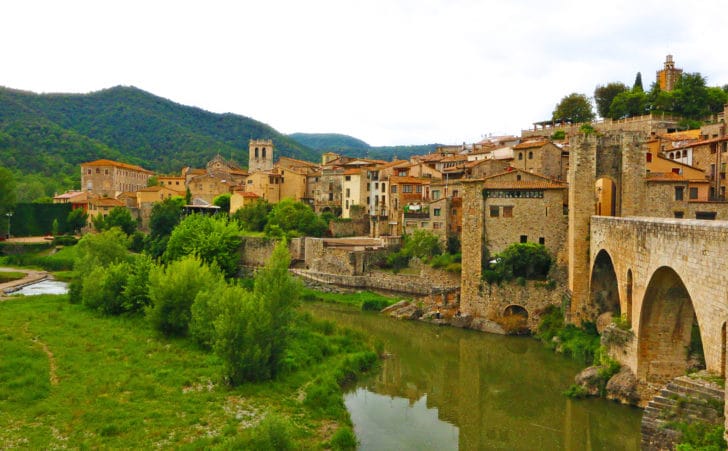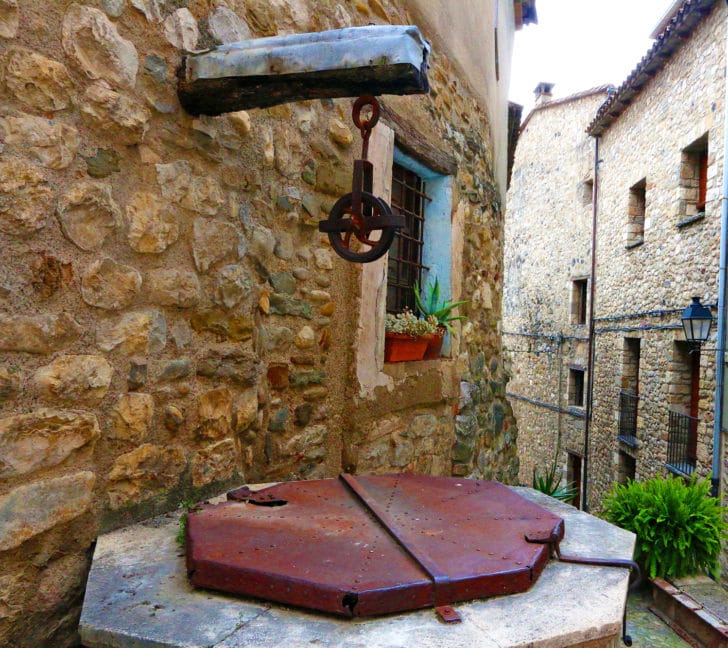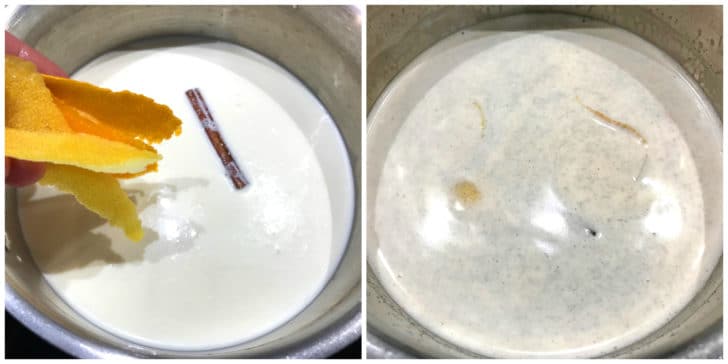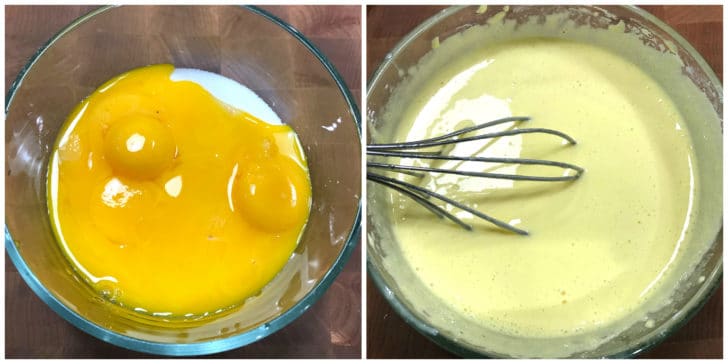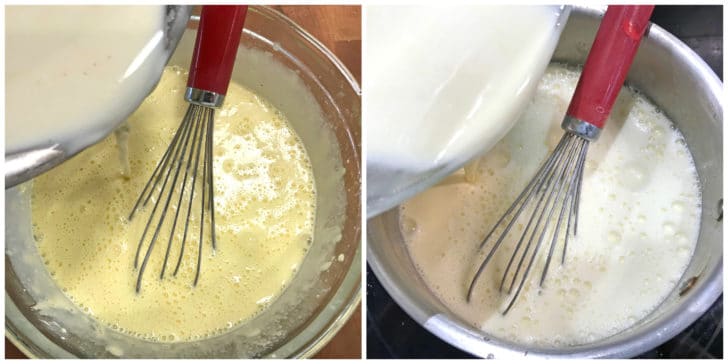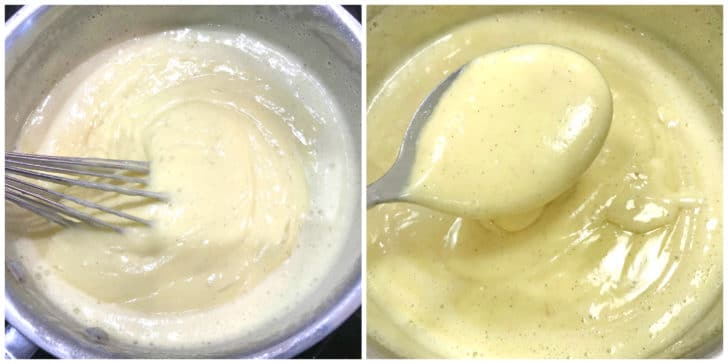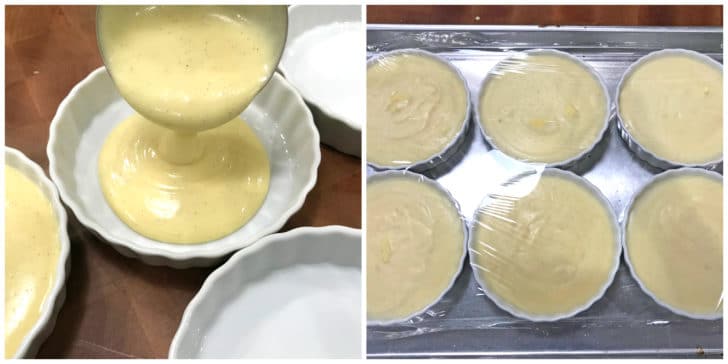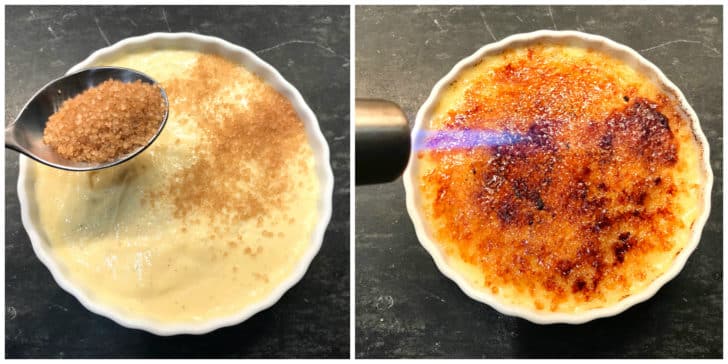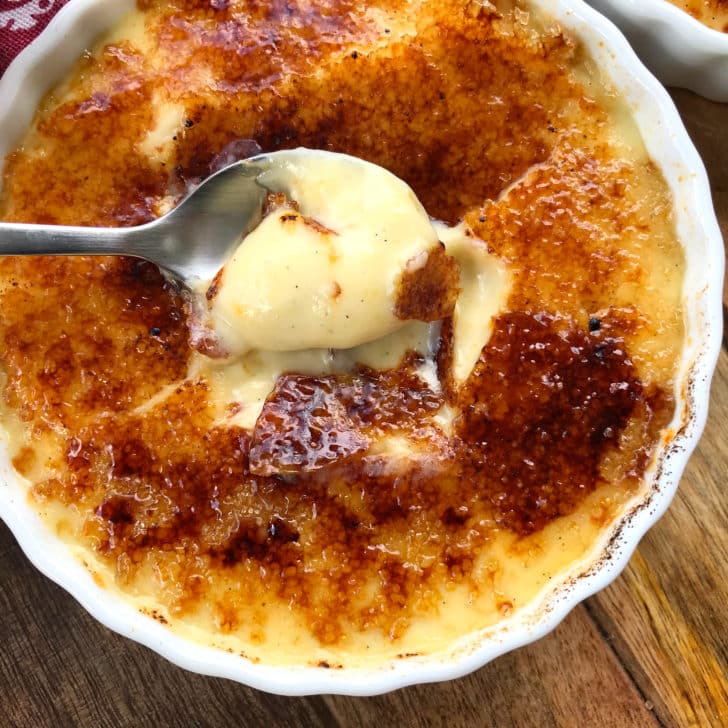One of Europe’s oldest desserts, Spain’s famous burnt custard dessert known as Crema Catalana (Catalan Cream) is flavored with orange, lemon and a hint of cinnamon and has an irresistibly creamy texture and caramelized sugar topping! We’re confident you’re going to absolutely love it!
If you’re searching for an elegant yet super easy-to-make dessert that will guaranteed impress your dinner guests, you will love this Crema Catalana recipe! The process involves making a thickened vanilla custard, pouring it into ramekins and letting it cool and firm up, and then pouring sugar over the top and either burning it with a hot iron rod or a kitchen torch to form a burnt sugar crust.
Catalan Cream vs. Crème Brûlée: What Is The Difference?
Known as crema catalana or crema cremada (“burnt cream”), Catalan Cream is very similar to the French crème brûlée but there are some distinct differences. Crème brûlée is flavored with vanilla while Catalan cream is made with both vanilla and also flavored with orange and/or lemon and a hint of cinnamon. Crème brûlée is made with all cream while Catalan cream is made with milk or sometimes a combination of both (but more milk than cream). Whereas crème brûlée is thickened with the whole egg, Catalan cream uses the egg yolk only resulting in an even richer, creamier and slightly less firm texture. Some also describe crème brûlée as having a “greasier” texture whereas Catalan cream is lighter and more delicate. While crème brûlée has become the more widely known of the two versions and the invention of the famous burnt custard is commonly attributed to France, the credit actually goes to Spain. Among Europe’s oldest desserts, Catalan Cream dates back to at least the 14th century, the first time it appeared in print in the cookbook Llibre de Sent Soví, whereas the earliest known recipe for crème brûlée didn’t appear until 1691 in Cuisinier Royal et Bourgeois. As its name suggests, Catalan cream hails from Catalonia, the northeastern province of Spain, home to beach resorts, the Pyrenees Mountains and of course Barcelona. Catalonia also boasts a number of quaint and charming villages. One of our favorites is the picturesque medieval village of Besalu, just north of Barcelona, which features a striking 12th-century Romanesque bridge, arcaded streets, an early 10th century church, Jewish bath and synagogue.
Crema Catalana is enjoyed throughout the year in Catalonia but is also traditionally served on Saint Joseph’s Day on March 19th and is thus also sometimes called Crema de Sant Josep after Saint Joseph the husband of the Virgin Mary.
Crema Catalana Recipe
Crema Catalana is very easy to make, it only takes some patience as you have to wait a few hours for it to chill and set. It’s flavor gets even better the next day so you if you can handle the wait we highly recommend it because it’s well worth it. Let’s get started! Pour the milk and cream in a large saucepan and add the orange and lemon peel, vanilla bean or vanilla paste, and cinnamon stick. Heat over medium-high heat, stirring constantly to prevent scorching, until the milk is just on the bring of boiling. Then turn off the heat, cover (to prevent a skin from forming). Let sit and cool for 30-45 minutes to allow the flavors of the citrus peel, vanilla and cinnamon to infuse the milk. Once cooled down remove the citrus zest, cinnamon stick and vanilla bean (if using).
Towards the end of the cooling process, put the sugar and cornstarch in a mixing bowl along with the egg yolks. Whisk until smooth and pale.
Pour some of the milk mixture into the bowl with the egg yolk mixture and whisk together. Next pour all of the egg yolk mixture into the pot with with the milk mixture and whisk until combined.
Slowly heat the mixture, whisking constantly, until it is thickened. DO NOT BOIL.
Pour the custard into individual ramekins. Cover the ramekins with plastic wrap to prevent a skin from forming on top. Let them cool and then place them in the refrigerator to chill overnight, preferably for 24 hours for best flavor. The longer the custard chills the more time the flavor will have to develop.
Remove the custard from the fridge at least 20 minutes before serving to come to room temperature. Then sprinkle with turbinado sugar.
What is Turbinado Sugar?
Sprinkle the turbinado sugar over the top of each custard. The more you add, the thicker the crunchy burnt sugar topping will be. But be careful or the dessert will be overly sweet. Use a butane kitchen torch to “burn” the sugar until it’s a rich golden brown with some dark areas. Broiler Method: Broiler Method: If you’d rather you can also caramelize the sugar under the broiler in the oven instead of using a kitchen torch. To do this make sure the Catalan Cream is fully set and very cold (straight out of the fridge). Broil until the sugar is caramelized. Note this method runs the risk of cracking the dish so you have to be very careful! Also with broiling it will NOT get as dark and caramelized as with a kitchen torch.
The ramekins will be very hot so let them sit for a minute or two and then serve immediately. Enjoy!
Looking for the perfect Spanish-themed dinner to accompany your Crema Catalana? Serve it with Paella! Try one of our delicious traditional paella recipes:
Valencian Paella Seafood Paella Squid Ink Paella
Originally published on The Daring Gourmet March 31, 2020 Read more about me…

